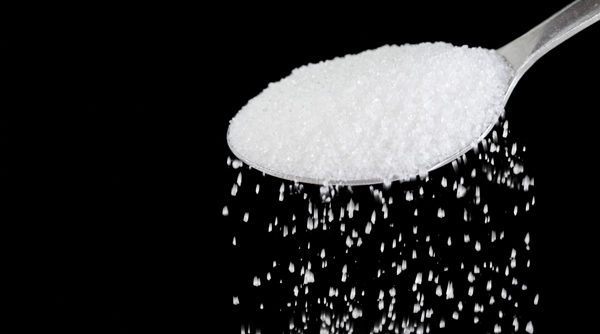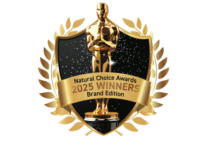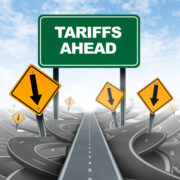Here’s a fact that even mainstream food companies can’t sugarcoat: sales of high-fructose corn syrup (HFCS) are slumping while the sweetener category as a whole is stable and growing. According to a report issued earlier this year by the Associated Press, sales of HFCS plummeted 11% from 2003 to 2008 thanks to shoppers’ desire to find healthier ways to satisfy their sweet tooth (1). This demand was strong enough to motivate food giants like Snapple, Gatorade and Starbucks to drop HFCS from their products altogether.
While some suspect conspiracy (a smear campaign from the sugar industry), one cannot ignore a likelier reason for this shift: many Americans want to live healthier lives and are starting with how they stock their pantries. Today’s consumers are experimenting with alternatives like agave, xylitol, pure cane sugar, stevia and Reb A, honey and maple syrup—and loving them!
Meet your next Top-Selling Sweetener
Last month, WholeFoods reported on Datamonitor’s prediction of the “next stevia.” In 2008, fractionated versions of stevia (Truvia from Cargill and Pure Via from Pure Circle) made a big impression on consumers as a natural, zero-calorie way to sweeten their favorite foods. Within months of their post-GRAS launch, stores from small natural retailers to large mainstream chains were selling out of Reb A. “Retailers embraced the brand quickly and Pure Via currently enjoys a strong percentage of national ACV [all commodity volume] distribution in food, grocery and mass merchandise stores,” states Pure Via brand director JJ Betts.
Many in the industry are trying to predict what could be the next top sellers in the sweetener category. Datamonitor suggested luo han go or monk fruit, an herb long used in the supplements industry. Now, however, large raw suppliers like Biovittoria have achieved GRAS status for their monk fruit ingredients, so we may start seeing this ingredient used in more grocery items soon.
But, there’s a catch. Unlike stevia, there hasn’t been much precedent overseas for the use of this sweetener in prepared foods and drinks, which, says Datamonitor, may make Americans hesitant to buy up. This begs an important question for natural products retailers: Which factors are most important to the success of a “new” sweetener in the U.S. food market?
Consumer awareness. Wes Crain, vice president of Navitas Naturals, Novato, CA, agrees with the Datamonitor analysis that it’s tough to launch a new sweetener with little historical use or existing awareness in the U.S. marketplace. He feels the onus is on the company pioneering the sweetener to lay the groundwork for educating the public. In fact, Betts says that his firm, as one of the first entrants into the Stevia Reb A category, spent nearly two  full years building the brand and educating consumers about it.
full years building the brand and educating consumers about it.
Cain compares the challenges monk fruit faces to another exotic sweetener he believes has much market potential: yacon syrup. “It is a great product that contains inulin, but it is somewhat expensive and people here have no background knowledge of it,” says Cain. He notes that his company is reaching out to shoppers by offering education at consumer events, holding demos, featuring it in online videos and publicizing it on the web.
On the opposite end of the spectrum, Cain explains that his firm’s new granulated maple sugar has experienced fast and strong growth because of existing awareness. “People understand it, and they generally know what to do with it and have expectations for how it will taste and what recipes they can use it with,” he states.
So, retailers, don’t be shy about asking manufacturers of new sweeteners what they are doing to promote them. Their marketing campaigns are, of course, strongly tied to how successful their products will be in your store.
Great taste. Another important marker of a great new sweetener is the right combination of excellent taste and versatility. Stephen Richards, president and CEO of BetterBody Foods & Nutrition, LLC (maker of Xagave), Linden, UT, makes the point that “If it does not taste good, there will never be mass acceptance of it in people’s diets.” Plus, he says that a new sweetener must offer similar versatility to sugar, which he calls the gold standard from for taste and ease of use.
Neil E. Levin, CCN, DANLA, nutrition education manager at NOW Foods, Bloomingdale, UT, also hits on taste. He notes that monk fruit (like stevia) contains terpenes (molecules that plants use to make sugars), which gives off a bitter flavor aftertaste. Such bitterness can stand in the way of a sweetener achieving U.S. market success, though some companies like NOW Foods have found ways to combat this. Levin notes that his company’s Better Stevia is “specially and organically processed to minimize that common and unpleasant effect.”
Reasonable cost. Successful sweeteners also must be priced reasonably. “People must decide, are the perceived benefits worth the increased cost? Sugar is a $100-billion-a-year industry and it is grown and processed all over the 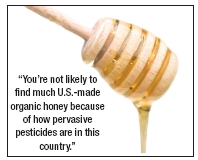 world at a very cheap price (although we have seen demand drive price up recently). In order to gain mainstream acceptance, alternative sweeteners need a perceived value that justifies the cost,” says Richards.
world at a very cheap price (although we have seen demand drive price up recently). In order to gain mainstream acceptance, alternative sweeteners need a perceived value that justifies the cost,” says Richards.
He uses agave nectar as an example. This sweetener is far more expensive than sugar (usually five to 10 times the cost), but consumers are still drawn to agave because of its benefits as a low-glycemic food. The pluses, says Richards, “have justified the price differential and given it great acceptance.”
Health benefits. Another important factor is how the sweetener functions in the body— especially how it affects one’s blood sugar levels. Says Gael Orr, communications manager at Once Again Nut Butter/Dawes Hill Honey, Nunda, NY, “With the rise of obesity and diabetes, the way the body processes sweeteners without significant highs and lows in blood sugar, will make one sweetener more desirable over another.” Also, she raises the point that sweeteners that add too many calories or are converted to fat in the body (like HFCS) are at a disadvantage. “Many artificial sweeteners inhibit the brain from releasing chemicals that help the body to know it has consumed enough calories,” Orr says.
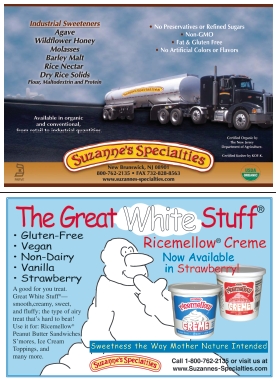 Similarly, using sweeteners as a healthpromoting tool is spurring sales among sweeteners that have research-backed health benefits. Commenting on the growth of xylitol sales his company has seen, Brian Craig, vice president of Xlear, Orem, UT, believes increased interest and demand for this sweetener is “being driven by the great studies that have shown the additional dental protective benefits that xylitol provides. We are continuing our active involvement in a number of xylitol studies that will further highlight the dental and oral health benefits and boost demand for the natural sweetener.”
Similarly, using sweeteners as a healthpromoting tool is spurring sales among sweeteners that have research-backed health benefits. Commenting on the growth of xylitol sales his company has seen, Brian Craig, vice president of Xlear, Orem, UT, believes increased interest and demand for this sweetener is “being driven by the great studies that have shown the additional dental protective benefits that xylitol provides. We are continuing our active involvement in a number of xylitol studies that will further highlight the dental and oral health benefits and boost demand for the natural sweetener.”
Another somewhat newcomer to the category, palm sugar, may soon see increased interest for its nutritional profile. This low-glycemic sweetener offers amino acids, potassium, magnesium, zinc and iron and B vitamins, says Cain.
High-profile partners. Last, getting a unique sweetener to the market is often much easier when a large company gets behind it. Craig notes that stevia was sold in U.S. health food stores for years but “it didn’t really get over the hurdle of FDA approval as a sweetener until some of the big boys in the soft-drink industry really got serious about it.”
Betts agrees and speaks of this relationship: “Our partnership with Pepsi offers a powerful platform to build awareness and trial, and the synergies between our products have been a significant selling point. “ Pepsi uses this sweetener in several beverages including SoBe Lifewater, Trop 50, G2 and Lipton (Pureleaf and All Natural Iced Tea), which “have performed very well ,” says Betts.
It should, however, be noted that large companies aren’t prerequisites for success. Many small natural companies have secured a strong place in the sweetener market and will continue to do so for years to come.
Agave: Yea or Nay? Recently, there’s been some debate about whether agave is as healthy a sweetener as many once thought. Joseph Mercola, M.D., recently wrote that agave makers are trying to “cover the truth that what they’re selling you is a bottle of high-fructose syrup, so highly processed and refined that it bears NO resemblance to  the plant of its namesake”(2). His point is that some agave syrups are 55% fructose, which is about the same as HFCS.
the plant of its namesake”(2). His point is that some agave syrups are 55% fructose, which is about the same as HFCS.
According to those interviewed for this piece, Mercola is offering misleading information. Levin says companies usually use one of two methods to make agave: either an enzyme or thermal hydrolysis. “Both processes achieve the same goal,” he states. They “separate fructans [complex sugar molecules] or inulin (a similar complex naturally occurring chain of fructose [FOS]), into simpler fructose and glucose within the juice/syrup.”
The end product usually is mostly fructose, he says, and little glucose. Fructose is a natural sweetener found in plants and fruits. Levin states that it is “about 50% sweeter than sucrose [and] can also be used more sparingly in recipes to cut their caloric intake by about one-third.” He also makes the important point that fructose will only stimulate insulin a fraction of what white sugar or glucose do. Dietary sugar expert John Yudkin, Ph.D., M.D., stated, “Human clinical studies have not consistently shown the effect of fructose to induce insulin resistance; a negative effect reported in some animal and preliminary human studies related to altered liver metabolism,” according to Levin.
Levin confirms that neither the thermal nor the enzymatic method is like the processing of HFCS, “which creates fructose out of the glucose made from the milled starch of corn.”
Glycemic index. What the Mercola point of view does underscore is that it’s vital for retailers to understand the agave market, and the ins and outs of the varieties.
Many manufacturers, for instance, have their products tested by a thirdparty lab to see how they fall on the glycemic index (GI). For instance, Randy Bulow, co- founde r of Ohgave ! , Lewisville, DE, says his firm wants shoppers to “know what they’re buying.” For this reason, his company’s agave products are independently and routinely tested by MicroBac Labs. “We have also received certification of our agave as being at 17 on the glycemic index scale from the Glycemic Index Laboratories. These data points provide consumers with the knowledge to use our product armed with the right information, and it provides retailers the confidence in recommending our product,” says Bulow.
The glycemic index is an indicator of how carbs affect one’s blood sugar levels after eating. Says Richards, “All of us, not just diabetics, should be concerned about blood sugar levels for a number of reasons.” Low-GI foods tend to be digested more slowly than high-GI foods, and thus are absorbed into the body more steadily and without spikes in our blood sugar. “We all feel better if we avoid spikes in our blood sugar levels and the corresponding crash when we come down,” says Richards, who believes that a major cause of obesity is eating too many high-GI carbs that spike one’s blood sugar levels.
But retailers must remember that every agave product is slightly different, and thus have varying GI numbers. Be sure you know which products have low-GI documentation before advising shoppers with a blanket statement.
And, always recommend that diabetics consult their physicians before trying something new.
Dark or light? raw or not? Agave experts are also quick to point out that agave syrups have differing properties depending on their individual sources. Here are some tips for how to decide which agave products should fill your shelf:
• Darker agaves often have a stronger flavor that is reminiscent of molasses, honey or nuts.
• Lighter agaves often have a lighter, more neutral taste.
 • Agave is often derived from two different plants: Agave Salmiana (white agave) and Agave Tequilana Weber (blue agave). According to Richards, white agave has a more neutral flavor and is a good source of calcium (17% of one’s daily requirement). Blue agave contains the prebiotic inulin, which is said to support immune, bone and digestive health. Some firms, like his, combine both sources of agave in their products; others stick with just the blue variety.
• Agave is often derived from two different plants: Agave Salmiana (white agave) and Agave Tequilana Weber (blue agave). According to Richards, white agave has a more neutral flavor and is a good source of calcium (17% of one’s daily requirement). Blue agave contains the prebiotic inulin, which is said to support immune, bone and digestive health. Some firms, like his, combine both sources of agave in their products; others stick with just the blue variety.
• Some agaves offer certifications like non-GMO or organic.
• Some agaves are labeled as “raw.”
The issue of whether raw agave has any health benefits is a bone of contention in the industry. Jim Morano, Ph.D., technical director for Suzanne’s Specialties of New Brunswick, NJ, offers some background. Some foods, like vegetables, may lose some nutritional value during cooking as vitamins and enzymes are destroyed. Other foods, like brown rice flour, should be heated. If you don’t heat this flour, its lipase enzyme will cause the product to become rancid before you can consume it. So in a nutshell, one can benefit from eating some foods raw and others cooked.
According to Morano, there isn’t strong third-party evidence indicating raw agave juice or syrup has significant nutritional value over the heated variety.
Having said that, the term “raw agave” may be somewhat of a misnomer on some labels as several agave suppliers heat their products somewhat. Some feel as long as the syrup stays under 120 degrees Fahrenheit, it is still technically a raw agave product. Most agaves, says Morano are heated to 144 degrees Fahrenheit, which he feels is advantageous because it helps kill pathogens.
a raw agave product. Most agaves, says Morano are heated to 144 degrees Fahrenheit, which he feels is advantageous because it helps kill pathogens.
Given these variations, “Know what you’re buying,” says Bulow. For instance, find out if your raw agaves are heated.
Or, check with your agave makers about if they are, indeed, a good source of inulin. According to Morano, the juice from an agave is mostly inulin. But, when companies use heat or enzymatic techniques to liberate the sweet fructose for agave syrup, the inulin breaks down. “If you want inulin, then the product isn’t heated beyond pasteurization because you want the inulin molecule in tact as a soluble dietary fiber,” he says. “An agave sweetener is only a good source of inulin if you leave it there by half hydrolyzing it, for example.”
Bee Glad for Honey
Another important player in the sweetener category is honey, but the main buzz lately hasn’t been with sales. It’s been with the consistent decline in the honeybee population. According to www.helpthehoneybees.com, over the past three years, one in three honeybee colonies have abandoned their hives and died off. This Colony Collapse Disorder has been reported in 35 states. Since we rely on bees to pollinate plants used in a large portion of our food supply, this news is not good.
“The phenomenon of the disappearing bees has been truly frightening,” says Frantz Walker, president of Really Raw Honey Inc., Baltimore, MD. Beekeeping isn’t an easy job, he states. “It takes a great deal of knowledge, instinct, patience and good luck. Throw into the mix loss of bees due to mites, disease, and now them just not returning home,  and you have a recipe for disaster. Over the last 10 years, we have faced one new problem after another.”
and you have a recipe for disaster. Over the last 10 years, we have faced one new problem after another.”
According to Walker, experts are trying to fight the problem with failing solutions like using antibiotics or trying to relocate bees to other areas. “What we have had over the last few years is a smaller population of bees, and a great deal less honey,” he says.
Some have speculated that the source of CCD may be viruses, mites, chemical exposure, pesticides and poor nutrition, says www.helpthehoneybees.com. Given the potential connection to chemicals and pesticides, Orr believes shoppers should support organic products. “Organic farming plays a key role in helping to prevent bee disappearance. Pesticides used on crops as well as families using household pesticides clearly are part of the cause of colony collapse,” she states.
Unfortunately, though, you’re not likely to find much U.S.-made organic honey because of how pervasive pesticides are in this country. “Organic standards for honey stipulate that you must have five miles of organic land surrounding the bee hives for a honey to be certified organic,” says Orr. “Pesticide use is so strong there isn’t a place in the United States large enough where honeybees can exist without the negative consequences of pesticides (except for Hawaii). Here is the good news. You can still eat wonderful organic honeys from international locations.”
Walker believes that imposing too many industrialized techniques on honeybees may be making matters worse. “Perhaps we should take a step back in time and move away from putting the pressures of our modern age on to the other creatures that share this space with us, and are so essential for our existence. Bees are under many of the same stresses that we are under. They are also getting sick from these various stresses just as we do: too much travel for work, poor nutrition, constant exposure to chemicals and pesticides in the environment.”
Retailers can help by raising awareness of this important issue year round and especially on National Honey Bee Awareness Day, Augus t 21 (www.nhbad.com). “It’s important for people to be involved in what they can do to help prevent the disappearance of bees,” Orr believes. Consumers can encourage bees to proliferate by planting flowering plants. “If you own lots of land and aren’t using it, why not let a local bee farmer set up some hives?” she suggests.
At the same time, let shoppers know about the benefits of local and raw honey, which she says offers good allergen benefits. Don’t hesitate to let shoppers know that they should consider trying honeys from different regions. “Just like wines taste different from different regions so do honeys. Honeys take on the flavors of the plants the bees are pollinating. People need to embrace the enjoyment of experimenting with different honey flavors and regions of the world. It’s just another way that people can enjoy a cultural experience,” states Orr.
Given how different honeys taste from one another, stores may want to have a honey tasting in honor of bee awareness. See this month’s Consumer Bulletin on page 84 for more information about honey. WF
References
1. “High Fructose Corn Syrup Sales Down 11%,” June 2, 2010, Associated Press, http://chicagobreakingbusiness.com /2010/06/high-fructose-corn-syrup-salesdown-11.html, accessed Sept. 22, 2010.
2. J. Mercola, “This Sweetener Is Far Worse Than High Fructose Corn Syrup,” The Huffington Post, Apr. 15, 2010, www.huffingtonpost. com/dr-mercola/agave-this-sweeteneris-f_b_537936.html, accessed Sept. 22, 2010.
Published in WholeFoods Magazine, November 2010

